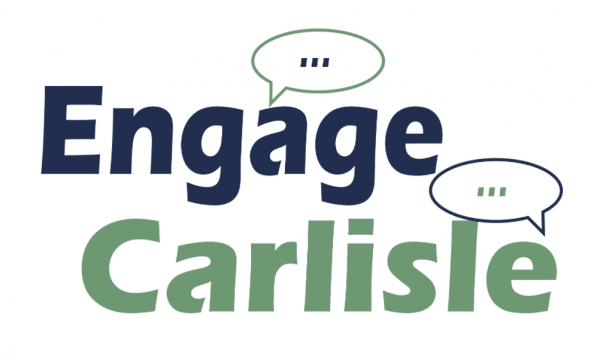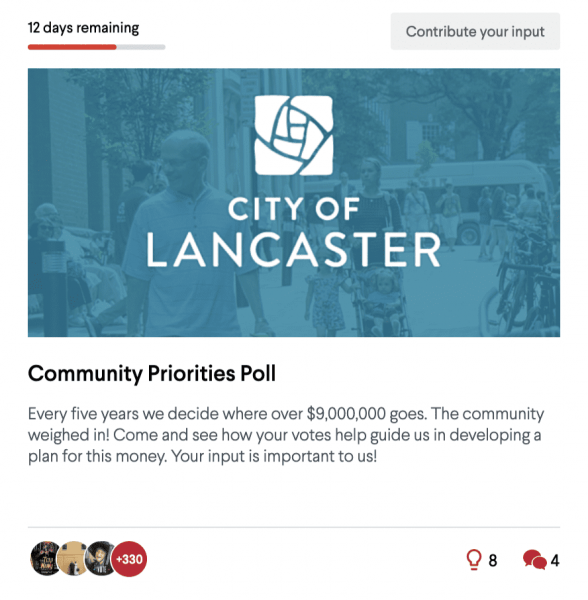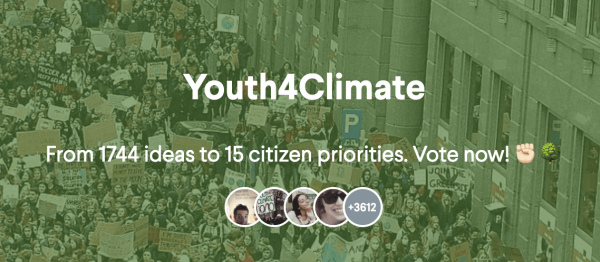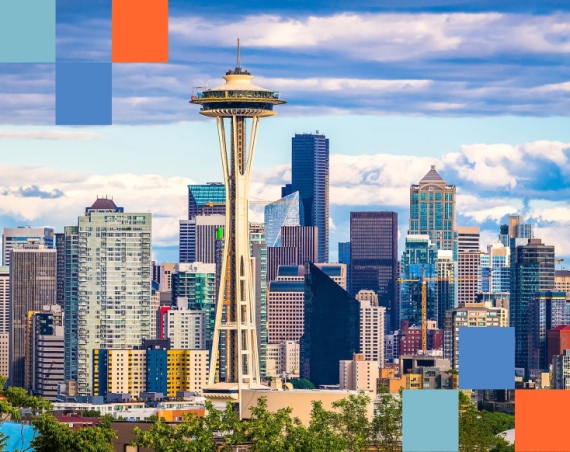In March 2021, President Biden signed the American Rescue Plan Act (ARPA), committing to distribute $350 billion to state and local governments. Compared to prior packages, ARPA provides cities and counties with more flexibility in how they allocate these funds, igniting debates across the country as to how to best prioritize spending.
- Update 5/21/21: The U.S. Department of the Treasury recently released additional guidance on how ARPA money can be spent. Engagement platforms meet ARPA requirements as they:
1. Increase efficiency and improve the efficacy of economic relief programs
2. Reach residents faster with critical updates, including re-opening notifications
3. Enhance public communication, particularly for hard-hit communities and those not reached by other forms of engagement
4. Modernize IT infrastructure and promote collaboration between departments and local governments
Reflecting on lessons learned
As more local governments begin to create ARPA action plans, they should incorporate the hard-learned lessons of the past year, most notably that:
- Community needs change quickly,
- COVID-19 hit some communities much harder than others, and
- With limited budgets and competing needs, demonstrating impact is critical.
These funds, along with the infrastructure-focused American Jobs Plan, also represent new opportunities to re-imagine the future of communities. For the first time in over a year, local governments can begin to look further ahead and plan for a post-COVID future.
A more resilient, equitable, data-driven future
With so much at stake, local governments across the US are using community engagement strategies to prioritize their recovery spending. Doing so will help their cities become more:
- Resilient, by addressing community needs as they develop;
- Equitable, by prioritizing groups that have been most impacted by the pandemic’s economic and social effects; and
- Data-driven, by using community feedback to guide budget allocation upfront and to demonstrate impact afterward.
In short, local governments are at an inflection point. In the words of Milzy Carrasco, Director of Neighborhood Engagement for the City of Lancaster, community engagement “has gone from something we should do to something we have to do”, and is now an essential tool for smart decision-making and local leadership.
Engaged cities in practice
Here are three ways cities can use community engagement to spend smarter, and become more resilient, equitable, and data-driven in the process:
1. Engaged cities are resilient cities
COVID forced cities to move fast and be flexible, and those with engagement strategies were at an advantage as they already understood existing community needs and had communication systems in place to help learn on the fly. As the focus shifts to recovery, city leaders can now use engagement to evaluate, learn, and prepare for future climate, economic, or public health shocks.

One potential solution: Cities can create a single online hub that residents can turn to for up-to-date, accurate information. This hub becomes increasingly valuable when residents can also immediately weigh in with context-specific questions, feedback, and ideas. For larger cities, it’s critical to align this hub with existing online resources and create a “no wrong door” approach, meaning residents can easily access the information they need regardless of the initial system (or website) they use.
Resiliency in action: In the early days of the pandemic, Carlisle, PA’s (pop. 20,000) Community Action Network (CAN) stepped up to triage information and resources for those who lost their jobs or needed food or medical support. CAN, launched two years prior in partnership with Dickenson College, was able to quickly meet community needs because they already had the network and know-how in place, and could also get creative in meeting new challenges. For example, as the pandemic wore on, CAN marshaled Dickenson computer science students to help local businesses set up online stores. Carlisle has since invested in their own online engagement hub, Engage Carlisle, and is currently a finalist for the All America City Award run by the National Civic League.
2. Engaged cities are equitable cities
COVID hit communities of color particularly hard. Black and Brown Americans have experienced much higher rates of job loss, as well as death and hospitalization. Cities must factor these disparities into their recovery spending and design engagement strategies that prioritize those communities most in need.

One potential solution: Equitable online engagement first requires cities to recognize and evaluate their own digital divides, and craft dedicated outreach strategies to communities that may not already be online. City leaders can create dedicated virtual spaces to engage specific communities based on demographics, neighborhoods, or local group affiliation. These virtual spaces can feature live engagement (e.g. regular online meetings) or asynchronous engagement (e.g. part of an existing online platform). This approach ensures all engagement is inclusive and diverse, and allows city leaders to rebuild trust and dive deeper into the issues facing now further marginalized communities.
Equity in action: While known for its Amish population, 40% of Lancaster, PA (pop. 60,000) residents are Spanish-speaking, and the city resettles the most refugees per capita in the United States. To raise awareness about their new online engagement platform, Engage Lancaster, City leaders launched a multilingual outreach campaign that included, phone and paper surveys (co-designed with residents), radio ads, and paper flyers with embedded QR codes to capture feedback and drive engagement to the platform. As a result, traditionally underrepresented communities began using the platform at record rates. Building off this success, the City is now planning to provide minority community leaders with their own dedicated online spaces within Engage Lancaster where they can regularly meet and coordinate their own community’s needs.
3. Engaged cities are data-driven cities
After Google’s Sidewalk Labs decided to abandon its work in Toronto due to community push-back, it’s clear that a city can only be “smart” if its leaders understand local wants and needs. With a developed online engagement strategy, city leaders can make smarter, data-driven budget decisions and better measure and demonstrate impact after the fact.

One potential solution: One of the many benefits of online engagement is the amount of hyper-local and real-time data it produces. By setting up dashboards to track existing engagement initiatives, and incorporating Natural Language Processing (NLP) tools to analyze comments, ideas, and written feedback, city leaders gain a granular understanding of where and when money needs to be allocated. Then, once money begins moving, cities can continue to engage both broadly and within specific groups and neighborhoods to evaluate and demonstrate impact.
Data in action: In 2019, youth-led climate protests sprung up around the world, pushing for more drastic action against climate change. In response, organizers of Belgium’s local group launched an online engagement platform on which youth from around the country could share, discuss, and vote on ideas and policy measures they wanted to see. The platform was an overwhelming success, but now organizers had a new problem: too much data. They needed to analyze and make sense of the movement’s thousands of ideas and comments, made in multiple languages, in a short time period. To do this, organizers used Natural Language Processing tools to identify common and emergent themes, helping them to identify 15 priority topics for further discussion and eventual transformation into policy.
Planning for the future
Last year, COVID forced us all to think differently about how local government systems work and who they serve. This year, we must take that same open-minded approach to recovery spending, especially in light of the ARPA, and bring the community into the conversation as early and often as possible. Doing so will ensure city spending increases resilience and equity, and is supported by data. More importantly, a robust community engagement strategy will reinstill a much-needed local sense of “we”, creating long-term compounding benefits and building (and rebuilding) trust between local governments and their residents.







